 W
WThe history of the Union Pacific Railroad stretches from 1862 to the present. For operations of the current railroad, see Union Pacific Railroad; for the holding company that owns the current railroad, see Union Pacific Corporation.
 W
WThe Union Pacific Railroad, legally Union Pacific Railroad Company and simply Union Pacific, is a freight-hauling railroad that operates 8,300 locomotives over 32,200 miles (51,800 km) routes in 23 U.S. states west of Chicago and New Orleans. The Union Pacific Railroad system is the second largest in the United States after BNSF and is one of the world's largest transportation companies. The Union Pacific Railroad is the principal operating company of the Union Pacific Corporation, both headquartered in Omaha, Nebraska. The president of Union Pacific since 2015 is Lance Fritz.
The Alameda Corridor is a 20-mile (32 km) freight rail "expressway" owned by the Alameda Corridor Transportation Authority that connects the national rail system near downtown Los Angeles, California, to the ports of Los Angeles and Long Beach, running parallel to Alameda Street. The corridor is considered one of the region's largest transportation projects when it was constructed.
 W
WThe American Refrigerator Transit Company (ART) was a St. Louis, Missouri-based private refrigerator car line established in 1881 by the Missouri Pacific and Wabash railroads. It is now a subsidiary of the Union Pacific Corporation.
 W
WThe Ames Monument is a large pyramid in Albany County, Wyoming, designed by Henry Hobson Richardson and dedicated to brothers Oakes Ames and Oliver Ames, Jr., Union Pacific Railroad financiers. It marked the highest point on the First Transcontinental Railroad, at 8,247 feet (2,514 m).
 W
WThe Harahan Bridge is a cantilevered through truss bridge that carries two rail lines and a pedestrian bridge across the Mississippi River between West Memphis, Arkansas and Memphis, Tennessee. The bridge is owned and operated by Union Pacific Railroad and is the second longest pedestrian/bicycle bridge in the United States. It was built with roadways cantilevered off the sides of the main structure for vehicles. These roadways are owned by the cities of Memphis, Tennessee and Crittenden County, Arkansas, and were used from 1917–1949, until the Memphis & Arkansas Bridge opened 400 feet (120 m) south of the Harahan. The bridge was named in honor of railroad executive James Theodore Harahan, former president of the Illinois Central Railroad, who was killed in a railroad accident during the construction of the bridge. In February 2011, Union Pacific Railroad officials agreed to the idea of converting the 1917 roadways into a bicycle-pedestrian walkway across the river. In June 2012, Memphis was awarded a $14.9 million federal grant to build the walkway. The overall project was expected to cost $30 million, of which about $11 million was used for the Harahan Bridge portion. . Construction was completed in 2016.
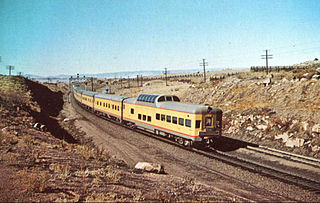 W
WThe Astra Domes were a fleet of streamlined dome cars built by the American Car and Foundry Company ("ACF") for the Union Pacific Railroad in 1954–1955. ACF built a total of 35 cars including coaches, dining cars, and observation cars. After Union Pacific exited the passenger business in 1971 the Auto-Train Corporation purchased most of the fleet and operated them for an additional ten years.
 W
WThe Belt Railway Company of Chicago, headquartered in Bedford Park, IL, is the largest switching terminal railroad in the United States. It is co-owned by six Class I railroads — BNSF Railway, Canadian National Railway, Canadian Pacific Railway CSX Transportation, Norfolk Southern Railway, and Union Pacific Railroad — each of which uses the switching and interchange facilities of the BRC. Owner lines and other railroads bring their trains to the Belt Railway to be separated, classified, and re-blocked into new trains for departure. The BRC also provides rail terminal services to approximately 100 local manufacturing industries. The company employs about 440 people, including its own police force and fire department. Its president is currently Michael J. Grace.
 W
WThe Big Fill was an engineering project on the First Transcontinental Railroad in the U.S. state of Utah. To avoid a costly 800-foot (240 m) tunnel through mountainous terrain east of Promontory Summit, Central Pacific engineers mapped an alternate route that still needed to span the deep Spring Creek Ravine.
 W
WThe Blue Line is a light rail line on the TRAX system in the Salt Lake Valley of Utah, in the United States, operated by the Utah Transit Authority (UTA). It is the first line of the TRAX system completed. The line opened on December 4, 1999, one year ahead of schedule after two years of construction. In addition to Salt Lake City, it also serves the communities of South Salt Lake, Murray, Midvale, Sandy and Draper. The line was known as the North/South Line or the Sandy/Salt Lake Line until color names were adopted for each TRAX line in August 2011. An extension of the line to Draper began service on August 18, 2013.
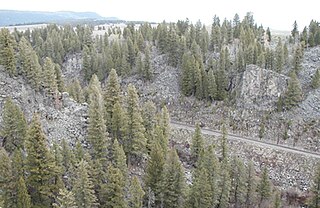 W
WThe Butte Special was a named passenger train on the Union Pacific Railroad. The special ran between Salt Lake City, Utah and Butte, Montana by way of Pocatello, Idaho on the UP's Montana Division. The Butte Special's consist was formalized sometime in the 1920s, with the typical setup containing several mail cars, a Railway Post Office car, two or three reclining seat coaches, a cafe/lounge car, and up to three sleeper cars. The train had a popular connection with the UP's Yellowstone Special at Idaho Falls, Idaho where the Yellowstone bound train went east towards West Yellowstone, Montana and Yellowstone National Park. The Butte Special was the Union Pacific's only North-South passenger service. Although the train served a relatively small population, it was as fully featured of a train as any that Union Pacific offered.
 W
WThe California Zephyr was a passenger train that ran between Chicago, Illinois and Oakland, California via Omaha, Denver, Salt Lake City, Winnemucca, Oroville and Pleasanton. It was operated by the Chicago, Burlington & Quincy (CB&Q), Denver & Rio Grande Western (D&RGW) and Western Pacific (WP) railroads, all of which dubbed it "the most talked about train in America" on March 19, 1949, with the first departure the following day. The train was scheduled to pass through the most spectacular scenery on its route in the daylight. The original train ceased operation in 1970, though the D&RGW continued to operate its own passenger service, the Rio Grande Zephyr, between Salt Lake City and Denver, using the original equipment until 1983. In 1983 a second iteration of the California Zephyr, an Amtrak service, was formed. The current version of the California Zephyr operates partially over the route of the original Zephyr and partially over the route of its former rival, the City of San Francisco.
 W
WJohn Stephen "Jack" Casement was a general and brigade commander in the Union Army during the American Civil War and a noted railroad contractor and civil engineer. He directed the construction of the Union Pacific's section of the Transcontinental Railroad, which linked the Western United States with the East.
 W
WThis is a partial list of Union Pacific railroad civil engineers who worked on the Union Pacific railway in its initial construction from Council Bluffs, Iowa to Promontory Summit, Utah from its groundbreaking on December 1, 1863, to its completion on May 10, 1869.
 W
WThe Clark Avenue Railroad Underpass, also known as the Bonanza Underpass, is a bridge and underpass in Las Vegas, Nevada, United States that is listed on the National Register of Historic Places. The bridge is so named since at the time of construction it crossed Clark Avenue which was later renamed to Bonanza Road. The underpass is currently part of Nevada State Route 579.
 W
WColton Crossing is a railway crossing situated in Colton, California, directly south of Interstate 10. First built in 1883, it was the site of one of the most intense frog wars in railroad construction history, leading to a personal confrontation between famed lawman Virgil Earp and California Governor Robert Waterman. The crossing was the intersection of the tracks for the former ATSF and former Southern Pacific (SP) railroads. Southern Pacific is now Union Pacific and the Atchison, Topeka and Santa Fe Railway is now BNSF, and both the UP and BNSF still utilize their respective's predecessor's tracks. The Union Pacific tracks runs east-west at the crossing while the BNSF tracks operate north-south. Metrolink trains and Amtrak's Southwest Chief also use the BNSF tracks through the crossing while Amtrak's Sunset Limited utilize the UP tracks for that service. The Union Pacific tracks come from the east through the Coachella Valley and into the yard in West Colton. On the other hand, the BNSF tracks from the indirect west and direct south continue through the crossing and on to the yard in San Bernardino, which then head up north to Cajon Pass and eventually Barstow on the journey to Chicago.
 W
WThe Crédit Mobilier scandal, which came to public attention in 1872, was a two-part fraud conducted from 1864 to 1867 by the Union Pacific Railroad and the Crédit Mobilier of America construction company in the building of the eastern portion of the First Transcontinental Railroad. The story was broken by The New York Sun during the 1872 campaign of Ulysses S. Grant.
 W
WEmpire Express: Building the First Transcontinental Railroad is a book written by David Haward Bain, published in 2000. It follows the initial conception of the idea of a transcontinental railroad, during the two decades before the Civil War, to the work of the engineers and entrepreneurs who fixed the route, assembled financing, drafted a work force and launched the two lines toward the eventual meeting point at Promontory Summit, Utah, in 1869. The story alternates between the Union Pacific driving west from Omaha and the Central Pacific blasting through the mountains from California.
 W
WThe First Transcontinental Railroad was a 1,912-mile (3,077 km) continuous railroad line constructed between 1863 and 1869 that connected the existing eastern U.S. rail network at Council Bluffs, Iowa with the Pacific coast at the Oakland Long Wharf on San Francisco Bay. The rail line was built by three private companies over public lands provided by extensive US land grants. Construction was financed by both state and US government subsidy bonds as well as by company issued mortgage bonds. The Western Pacific Railroad Company built 132 mi (212 km) of track from the road's western terminus at Alameda/Oakland to Sacramento, California. The Central Pacific Railroad Company of California (CPRR) constructed 690 mi (1,110 km) eastward from Sacramento to Promontory Summit, Utah Territory. The Union Pacific Railroad (UPRR) built 1,085 mi (1,746 km) from the road's eastern terminus at the Missouri River settlements of Council Bluffs and Omaha, Nebraska westward to Promontory Summit.
 W
WThe golden spike is the ceremonial 17.6-karat gold final spike driven by Leland Stanford to join the rails of the First Transcontinental Railroad across the United States connecting the Central Pacific Railroad from Sacramento and the Union Pacific Railroad from Omaha on May 10, 1869, at Promontory Summit, Utah Territory. The term last spike has been used to refer to one driven at the usually ceremonial completion of any new railroad construction projects, particularly those in which construction is undertaken from two disparate origins towards a common meeting point. The spike is now displayed in the Cantor Arts Center at Stanford University.
 W
WThe Utah Division of the former Denver & Rio Grande Western Railroad (D&RGW) is a rail line that connects Grand Junction, Colorado and Salt Lake City, Utah in the Western United States. It is now incorporated into the Union Pacific Railroad (UP) system as its Green River and Provo Subdivisions, forming a portion of the Denver-Nevada Central Corridor. Daily passenger service is provided by Amtrak's California Zephyr, and the BNSF Railway and Utah Railway have trackage rights over the line.
 W
WThe Historic Union Pacific Rail Trail State Park is a recreational trail that follows abandoned railroad lines in Summit County, Utah, United States.
 W
WKelso is a ghost town and defunct railroad depot in the Mojave National Preserve in San Bernardino County, California, USA. It was named after railroad worker John H. Kelso, whose name was placed into a hat along with two other workers to decide the name of the town. The town was built in 1905 specifically as a railroad station along the rail line between Utah and Los Angeles, originally called "Siding 16," because of its location and nearby springs that provided abundant water.
 W
WKenefick Park is located at 100 Bancroft Street in South Omaha, Nebraska, next to the Lauritzen Gardens, Omaha's botanical gardens. Kenefick Park features "two of the greatest locomotives ever to power Union Pacific Railroad": EMD DDA40X #6900,the first of the class, and Union Pacific Big Boy #4023.
 W
WNothing Like It In the World is a narrative history of the planning and construction of the Pacific Railroad during the 1860s which connected the San Francisco Bay and Council Bluffs, Iowa by rail. Written by popular historian Stephen Ambrose, it was first published in August 2000, by Simon & Schuster.
 W
WOperation Lifesaver is the largest rail safety organization in the United States. It was founded by the Union Pacific Railroad in the early 1970s.
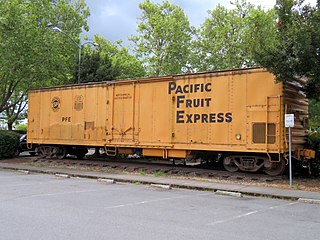 W
WPacific Fruit Express was an American railroad refrigerator car leasing company that at one point was the largest refrigerator car operator in the world.
 W
WThe Pacific series is a fleet of fifty lightweight streamlined sleeping cars built by the Budd Company for the Union Pacific Railroad in 1949–1950. Each car contained ten roomettes and six double bedrooms. Union Pacific sold several to the Chicago, Milwaukee, St. Paul and Pacific Railroad in the late 1960s; Amtrak purchased most of the fleet in the early 1970s. Several remain in use as business cars.
 W
WThe Pecos River High Bridge carries the Union Pacific Railroad across the Pecos River gorge and is the second high-level crossing on this site.
 W
WThe Umatilla Central Railroad built a 14.21-mile (22.87 km) branch line of railroad in Umatilla County, Oregon, U.S., connecting the main line of the Oregon Railroad and Navigation Company (OR&N) at Rieth to Pilot Rock. The company was incorporated on May 24, 1906, and was operated under lease by the OR&N from opening date, December 16, 1907, until December 23, 1910, when the properties of both were sold to new Union Pacific Railroad (UP) subsidiary Oregon–Washington Railroad and Navigation Company. The line has survived as UP's Pilot Rock Industrial Lead.
 W
WThe Placid series was a fleet of ten lightweight streamlined sleeping cars built by Pullman-Standard for the Union Pacific Railroad in 1956. Each car contained eleven double bedrooms. Amtrak acquired all ten from the Union Pacific and operated them into the 1980s; it retired the last in 1996. Several cars remain in private use.
 W
WThe Port Terminal Railroad Association is an American terminal railroad that operates 154 miles (248 km) of track at the Port of Houston in Houston, Texas.
 W
WThe Utah Division of the former Denver & Rio Grande Western Railroad (D&RGW) is a rail line that connects Grand Junction, Colorado and Salt Lake City, Utah in the Western United States. It is now incorporated into the Union Pacific Railroad (UP) system as its Green River and Provo Subdivisions, forming a portion of the Denver-Nevada Central Corridor. Daily passenger service is provided by Amtrak's California Zephyr, and the BNSF Railway and Utah Railway have trackage rights over the line.
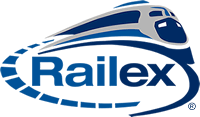 W
WRailex LLC is or was a refrigerated rail service and third-party logistics provider that transports fruits, vegetables and other temperature sensitive cargo across the United States, in partnership with the Union Pacific Railroad and CSX. In 2006 Railex launched service between Wallula, Washington, and Rotterdam, New York, followed in 2008 by a Delano, California, to NY lane. Railex runs unit trains of 55 large, "plate F" refrigerated cars and promises regularly scheduled departures and arrival on a five-day service schedule. It claims reduced carbon emissions when compared to conventional trucking. In 2017, Union Pacific acquired Railex's cold storage facilities and terminals at Delano, California; Wallula, Washington; and Rotterdam, New York, but not its wine unit, Railex Wine Services LLC, now known as Northwest Wine Services.In May 2020, Union Pacific discontinued both services. Railex' system is based on palletized cargo, which is loaded and unloaded indoors in temperature controlled docks that preserve a cold chain for the cargo. It also provides warehousing and can handle less-than-truckload (LTL) shipments. In June 2014, Railex opened a new facility in Jacksonville, Florida, with service from the west coast, and plans to add a facility near Chicago later in the summer.
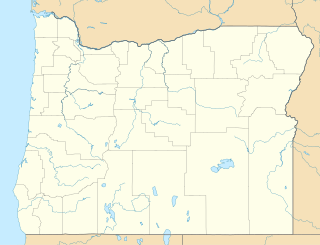 W
WRiverview is an unincorporated historic community in Umatilla County, Oregon, United States. Riverview was a station of the Union Pacific Railroad, near the Columbia River and north of U.S. Route 730.
 W
WThe Salt Lake City Intermodal Hub is a multi-modal transportation hub in Salt Lake City, Utah, United States served by the Blue Line of UTA's TRAX light rail system that operates in Salt Lake County and by the FrontRunner, UTA's commuter rail train that operates along the Wasatch Front with service from Ogden in central Weber County through Davis County, Salt Lake City, and Salt Lake County to Provo in central Utah County. Service at the intermodal hub is also provided by Amtrak, and Greyhound Lines, as well as UTA local bus service.
 W
WCharles H. Sharman (1841-1938) was a civil engineer who was part of the effort to build the Union Pacific railroad to Promontory Point, Utah in 1869. Sharman was present at the Golden spike ceremony on May 10, 1869, connecting the Central Pacific and Union Pacific railroads at Promontory Summit, Utah Territory. Sharman was also in the Russell photograph of the same date
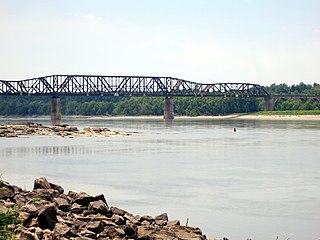 W
WThe Thebes Bridge is a five span cantilever truss bridge carrying the Union Pacific Railroad across the Mississippi River between Illmo, Missouri and Thebes, Illinois. It is owned by the Southern Illinois and Missouri Bridge Company, now a Union Pacific subsidiary.
 W
WThousand Mile Tree is a pine tree located in Weber Canyon near the community of Henefer, Utah along the Overland Route of the Union Pacific Railroad. In January 1869, graders of the railroad found a similar tree standing next to the line they were constructing, which by coincidence marked the western progress of exactly one thousand miles of road from Omaha, Nebraska/Council Bluffs, Iowa, the eastern terminus of the First Transcontinental Railroad.
 W
WThe Train of Tomorrow was an American demonstrator train built as a collaboration between General Motors (GM) and Pullman-Standard between 1945 and 1947. It was the first new train to consist entirely of dome cars, which were the brainchild of GM vice president and Electro-Motive Division (EMD) general manager Cyrus Osborn, who conceived the idea while riding in either an F-unit or a caboose in the Rocky Mountains in Glenwood Canyon, Colorado. After GM built a 45-foot (14 m) scale model of the train for $101,772 and displayed it to 350 officials from 55 different Class I railroads in 1945, the Train of Tomorrow was built by Pullman-Standard between October 1946 and May 1947.
 W
WGeorge Francis Train was an American entrepreneur who organized the clipper ship line that sailed around Cape Horn to San Francisco; he also organized the Union Pacific Railroad and the Credit Mobilier in the United States in 1864 to construct the eastern portion of the Transcontinental Railroad, and a horse tramway company in England while there during the American Civil War.
 W
WThe Union Pacific Corporation is a publicly traded railroad holding company. It was incorporated in Utah in 1969 and is headquartered in Omaha, Nebraska. It is the parent company of the current, Delaware-registered, form of the Union Pacific Railroad.
 W
WThe Union Pacific Harriman Dispatch Center is located at 850 Jones Street in downtown Omaha, Nebraska. Called "the Bunker" by some, the Harriman is Union Pacific's rail traffic control headquarters, where the movement of more than 850 trains and nearly 36,000 miles of track across the country is controlled and monitored. Originally a freight depot, the building was redeveloped in the early 1990s as a way to unite 10 regional dispatch centers the UP once ran across the country.
The Union Pacific Police Department is the law enforcement agency of the Union Pacific Railroad. Its headquarters is in Omaha, Nebraska and its current Chief of Police is Robert Morrison. The railroad police force dates to the 1850s, when the number of U.S. Marshals was insufficient to police America's growing rail network. U.S. Marshals were replaced with a private police company, the North-Western Police Agency, later known as the Pinkerton Agency. Officers were called Pinkertons, named after their originator, Allan Pinkerton, who founded the private police company in 1855 with Chicago attorney Edward Rucker. Today, the Union Pacific Police Department is one of the sixteen Class I railroad law enforcement agencies across the country.
 W
WThe Utah Parks Company Service Station in Bryce Canyon National Park was built in 1947 to serve automobile-borne visitors to the park. The service station was designed for the Utah Parks Company by architect Ambrose Spence in a style that was sympathetic to the prevailing National Park Service Rustic style, but was much simpler and more modern in character. In this manner, it foreshadowed the consciously simplified designs developed during the Mission 66 project.
 W
WThe Williams Loop is a rail spiral located on the Union Pacific Railroad's Feather River Route through the Sierra Nevada mountains in northeastern California, connecting the Sacramento Valley to Salt Lake City via the Feather River canyons. Located approximately five miles east of East Quincy, the loop is used to gain elevation on the WP's eastward climb to its summit at Beckwourth Pass while maintaining the railroad's overall 1.0 percent (compensated) grade, the least steep of any grade on a transcontinental railroad. More specifically, the loop helps the railroad to surmount the divide between the East Branch North Fork Feather River and the Middle Fork Feather River.
 W
W